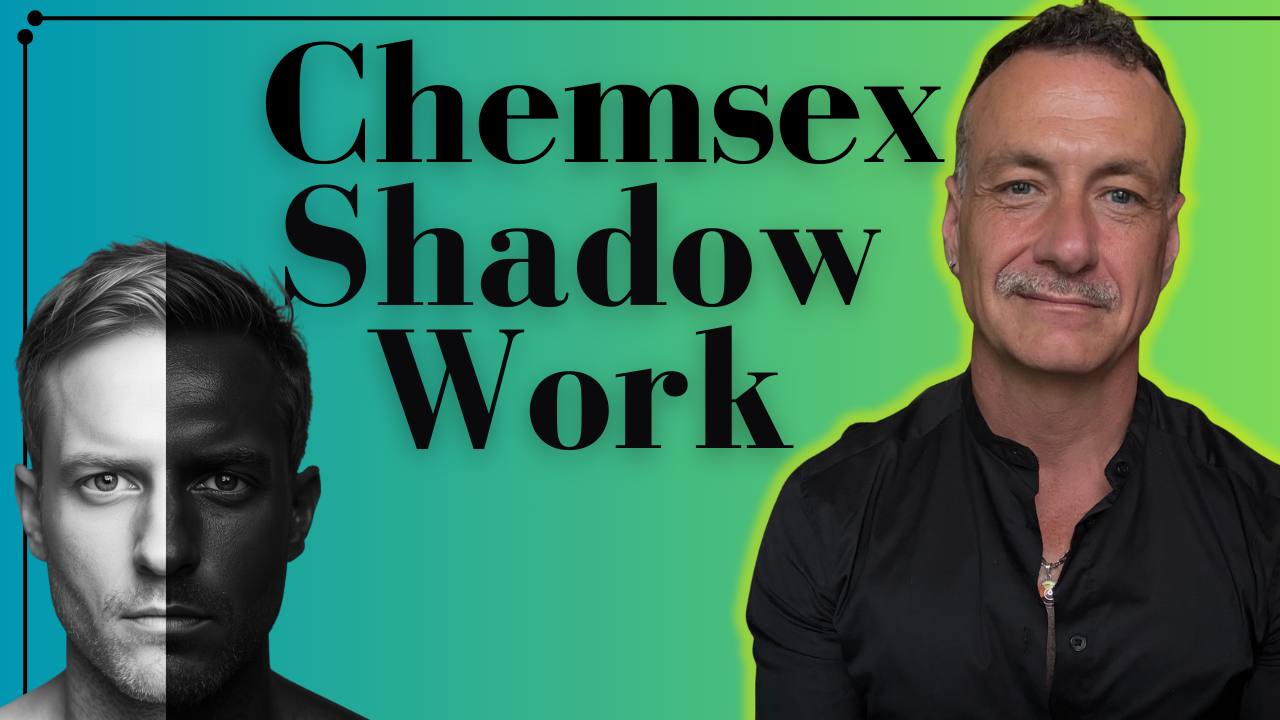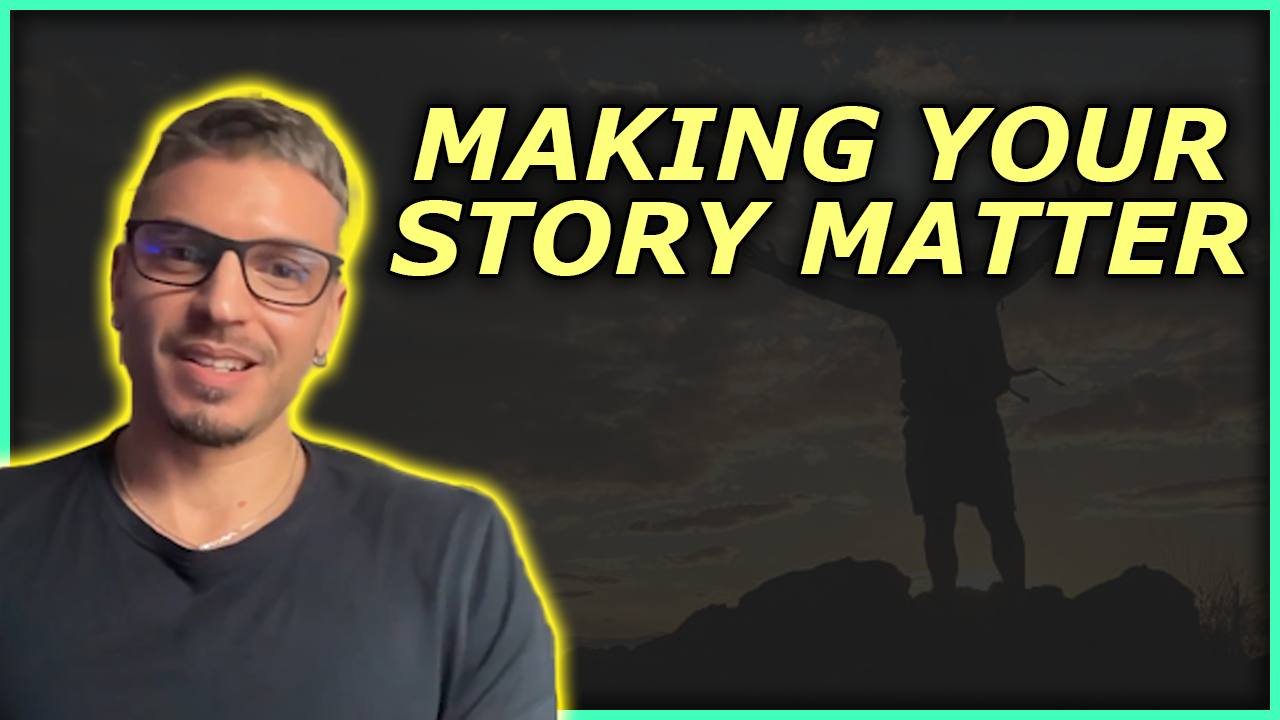What Does it Take to Transform?

5:30am comes early when you are catching the public bus.
Homeless and on my way to the courthouse to pee in a cup, then to treatment.
Once settled in my seat, I would close my eyes and lean my head back.
This would be my hour of escape into the future while we made our way to the City of Charlotte, NC.
I saw myself in a cute home, lounging on the couch with the kids.
I saw a car in the driveway and felt the peace and stillness of life after meth.
I was emotionally and spiritually there every morning.
That vision, that dream, permeated the cells of my body and carried me through from living on the streets to where I am today.
But it didn't magically land in my lap.
The transformation took time, work, and lotsssss of patience.
These are three concepts I often see missing in men who come to me for help.
They don't understand what it truly takes to transform.
Let's get real about transformation.
Not the Instagram version, not the self-help bestseller version, but the raw, messy, beautiful truth about what it means to fundamentally change who we are and how we move through the world.
The Truth About Change Nobody Talks About
Change isn't just hard—it's supposed to be hard.
What would be the point of life if it didn't take effort?
We're literally rewiring neural pathways that have been our survival strategies.
When we try to change, we're challenging our brain's fundamental understanding of how to keep us safe.
The subconscious has your best interest at heart and only does what you've taught.
When you try to change these patterns, your nervous system goes on high alert.
It's like your brain is saying, "Hey, wait a minute—this strategy kept us alive. Are you sure you want to mess with that?"
That reaction is called resistance. And resistance isn't your enemy.
It's a conversation your system is trying to have with you about safety, survival, and what you need.
Instead of trying to bulldoze through this resistance or beat yourself up for having it, what if we got curious about it?
What if resistance is actually pointing us toward something important we need to understand about ourselves?
Deep Dive Question: What if your resistance to change isn't a weakness, but your system's intelligence trying to protect you?
I help gay men break free from the addictive patterns of chemsex (Tina) and become their best and highest selves. My 1:1 coaching, Recovery Alchemy, is a six-month intense program that can literally change your life. I accept 2 new clients per month. Apply Here.
Understanding Your Operating System
Your behaviors exist for a reason.
Every pattern you've developed—even the ones that cause pain—is trying to solve a problem or meet a need.
Before we can change, we need to honor and understand these patterns.
Then, we can overwrite the patterns that we want to exist.
This process is like training a new puppy.
Time. Consistency. Patience.
These patterns didn't appear randomly; they evolved because, at some point, they worked.
They kept you safe, helped you cope, or got you the love and attention you desperately needed.
Over time, these strategies became automated—your brain's default operating system.
And here's the thing: this system is incredibly intelligent even when it causes pain.
It's like your psyche created a sophisticated security system, with alarms and protective measures all designed to keep you safe.
Understanding this changes everything.
Instead of seeing yourself as broken or dysfunctional, you can begin to appreciate the wisdom of your adaptations, even as you work to create new ones.
Deep Work: Meeting Your Patterns Sit with each of these questions for at least 5 minutes:
- What problem was your addictive patterns originally trying to solve?
- How did this behavior protect or help me in the past?
- What would need to be true for me to feel safe letting this pattern go?
The Hidden Truth About Homeostasis
Here's something crucial that most transformation work ignores:
When you start to change, your entire system—including your relationships—will resist.
Your current patterns are part of a larger ecosystem, and that ecosystem will fight to maintain stability.
We tend to villainize our brains and our addictive patterns as something working against us, but the effort to maintain stability is for our protection.
Your relationships will probably feel it first.
People who are used to you being a certain way might resist or react when you start showing up differently.
This isn't because they don't want you to grow; it's because your change requires them to change, too.
And that can be scary.
Understanding this systemic nature of change is crucial.
It helps us anticipate resistance, plan for support, and create environments that nurture rather than hinder our transformation.
System Mapping Exercise: Draw a map of your life, including:
- Key relationships
- Daily routines
- Environmental factors
- Support systems
- Stress points
Now, for each element, explore:
- How might this resist my change?
- What adjustments might this require?
- What support might this need?
The Consistency Principle
I want you to pay close attention to this statement:
Successful abstinence from crystal meth is not having superhuman strength and abilities.
It is about normal efforts maintained for abnormal periods of time.
This is both liberating and challenging—it means we don't have to be extraordinary, but we do have to be consistent.
You just need to show up daily, making slightly better choices.
But it's challenging because it requires something many of us struggle with: patience and trust in the process.
Each small action is like making a deposit in your transformation bank account.
These micro-commitments might seem insignificant at the moment, but they're actually rebuilding your relationship with yourself.
Every time you follow through on a small promise to yourself, you're proving that change is possible.
You're showing yourself that you can be trusted with bigger changes.
Practice: The 5-Minute Revolution
- Choose one small action that takes 5 minutes or less
- Commit to it daily for 30 days
- Track not just your action, but your resistance, emotions, and insights
- Notice how the practice evolves naturally
Working with the Negativity Bias
Your brain is wired to fixate on what's wrong, dangerous, and lacking.
This isn't a personal failure—it's how we survived as a species.
But in modern life, this bias can keep us trapped in patterns of self-criticism and fear.
Your system becomes hypervigilant, constantly scanning for potential threats and problems.
It's like your brain's threat-detection system is stuck on high alert.
But we can work with this design rather than against it.
We can acknowledge our brain's protective intent while gradually training it also to notice safety, progress, and possibility.
This is why I saw that effective recovery from meth is about perception, not perfection.
Notice the way you are perceiving events in your life and ask: am I coloring them with negativity or empowerment?
This is about building new neural pathways alongside the existing ones, creating a more balanced way of perceiving ourselves and our journey.
Daily Practice: Rewiring Your Focus
- Morning: What's one small thing you're doing right?
- Afternoon: What's one way you've shown up for yourself today?
- Evening: What's one piece of evidence that change is possible?
The Truth About Self-Worth
We compare our raw footage to everyone else's highlight reel.
We see every misstep, every backslide, and every moment of weakness in ourselves while only seeing others' curated successes.
This creates a distorted view of both ourselves and the change process.
But here's what's rarely talked about: self-worth isn't something you achieve—it's something you practice.
It's built in small moments of self-compassion, in challenging the inherited stories about who you are and what you're capable of.
The process is like turning the Titanic. You've built up enormous momentum in your current thinking. As we turn to self-compassion, it doesn't just happen. It's a slow progression in a new direction.
This isn't about becoming someone new; it's about remembering who you were before the world told you who to be.
True transformation requires us to rebuild our relationship with ourselves from the ground up, creating a foundation of self-trust and compassion strong enough to support the changes we want to make.
Radical Honesty Exercise:
- Write your "raw footage" story—all the messy, uncomfortable parts
- Share it with someone you trust
- Notice what happens when you let yourself be seen in your full humanity
The Fear of Hope
Many of us have been hurt so many times that hope feels dangerous.
It's easier to stay cynical, to expect failure, to keep our expectations low.
Our hope tolerance gets low when we've been hurt or disappointed repeatedly.
The irony is that we decide when we are hurt or disappointed. We think it is the fault of life's circumstances or other people, but this all falls on our responsibility.
Just like someone who's been injured might fear putting weight on their leg again, we become afraid to put weight on our hopes.
Building hope back up requires us to start small, to create evidence that change is possible through tiny victories and small signs of progress.
And WE decide what constitutes change and progress.
It's about finding that delicate balance between daring to hope and staying grounded in reality. Knowing that we create our own reality.
This is about developing the capacity to hold possibility even in the face of uncertainty.
Exploring Your Relationship with Hope:
- When did hope become dangerous for you?
- What would it mean to allow yourself to hope again?
- How can you hold hope while staying grounded in reality?
Your Journey
If you follow my content, I'm sure you've read or heard me say this:
Recovery is not about becoming a different person; it's about becoming who you truly are.
Your willingness to stay on this journey, to keep showing up even when it's hard, to maintain hope even when it feels risky—that's not just courage.
That's transformation in action.
Love you all!
Dallas
Comprehensive Integration Exercise: The Transformation Map
This exercise integrates all principles covered above into one cohesive practice. Set aside 2-3 hours for this work.
Materials Needed:
- Large paper or digital canvas
- Different colored markers/tools
- Journal
- Timer
- Quiet space
The Process:
- Foundation Mapping (30 minutes)
- Draw yourself at the center
- Map current patterns, relationships, and systems
- Note areas of desired change
- Mark points of resistance
- Pattern Analysis (30 minutes)
- For each major pattern:
- Note its origin
- List its protective function
- Identify its current impact
- Map its systemic connections
- For each major pattern:
- Authentic Desire Exploration (30 minutes)
- Deep dive into what you truly want
- Distinguish between adopted and authentic desires
- Connect desires to core needs
- Identify potential system impacts
- Strategy Development (30 minutes)
- Create micro-steps for each desired change
- Design environmental supports
- Plan for resistance
- Build feedback mechanisms
- Integration Planning (30 minutes)
- Develop daily practices
- Create tracking systems
- Plan system adjustments
- Design progress markers
Ongoing Practice:
- Daily: 5-minute review and micro-action
- Weekly: 30-minute progress review
- Monthly: 2-hour deep dive and adjustment
- Quarterly: Full map review and update





Responses